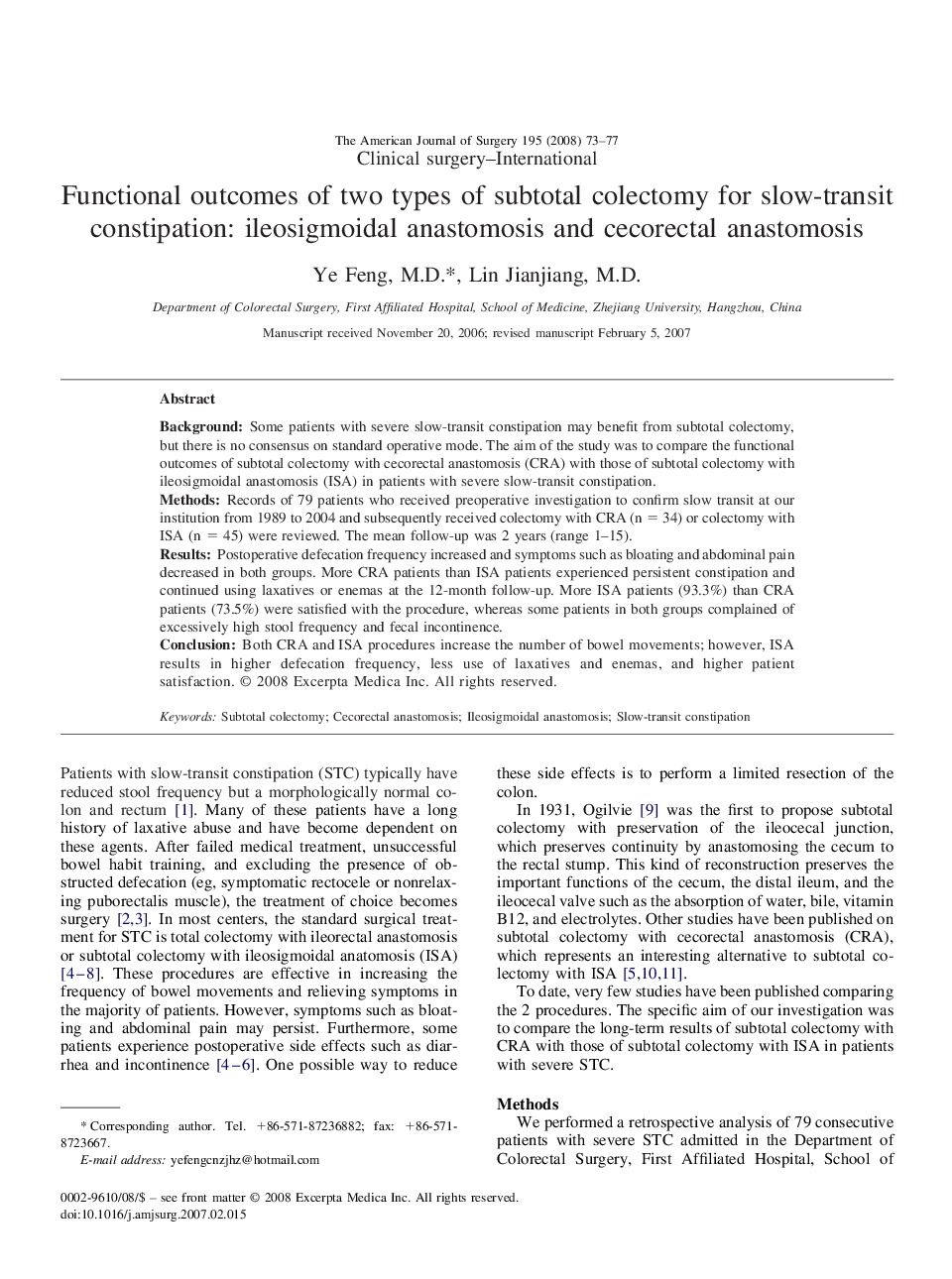| Article ID | Journal | Published Year | Pages | File Type |
|---|---|---|---|---|
| 4281295 | The American Journal of Surgery | 2008 | 5 Pages |
BackgroundSome patients with severe slow-transit constipation may benefit from subtotal colectomy, but there is no consensus on standard operative mode. The aim of the study was to compare the functional outcomes of subtotal colectomy with cecorectal anastomosis (CRA) with those of subtotal colectomy with ileosigmoidal anastomosis (ISA) in patients with severe slow-transit constipation.MethodsRecords of 79 patients who received preoperative investigation to confirm slow transit at our institution from 1989 to 2004 and subsequently received colectomy with CRA (n = 34) or colectomy with ISA (n = 45) were reviewed. The mean follow-up was 2 years (range 1–15).ResultsPostoperative defecation frequency increased and symptoms such as bloating and abdominal pain decreased in both groups. More CRA patients than ISA patients experienced persistent constipation and continued using laxatives or enemas at the 12-month follow-up. More ISA patients (93.3%) than CRA patients (73.5%) were satisfied with the procedure, whereas some patients in both groups complained of excessively high stool frequency and fecal incontinence.ConclusionBoth CRA and ISA procedures increase the number of bowel movements; however, ISA results in higher defecation frequency, less use of laxatives and enemas, and higher patient satisfaction.
